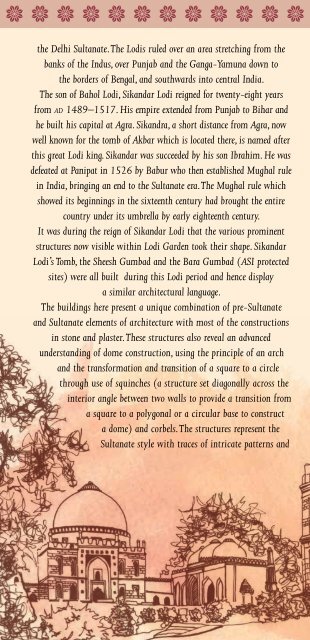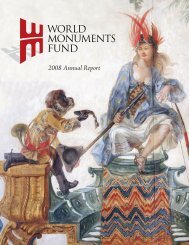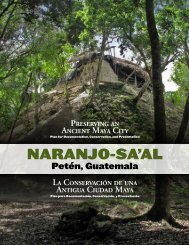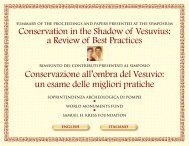Lodi Garden and the Golf Club (pdf) - World Monuments Fund
Lodi Garden and the Golf Club (pdf) - World Monuments Fund
Lodi Garden and the Golf Club (pdf) - World Monuments Fund
You also want an ePaper? Increase the reach of your titles
YUMPU automatically turns print PDFs into web optimized ePapers that Google loves.
<strong>the</strong> Delhi Sultanate. The <strong>Lodi</strong>s ruled over an area stretching from <strong>the</strong><br />
banks of <strong>the</strong> Indus, over Punjab <strong>and</strong> <strong>the</strong> Ganga-Yamuna down to<br />
<strong>the</strong> borders of Bengal, <strong>and</strong> southwards into central India.<br />
The son of Bahol <strong>Lodi</strong>, Sik<strong>and</strong>ar <strong>Lodi</strong> reigned for twenty-eight years<br />
from ad 1489–1517. His empire extended from Punjab to Bihar <strong>and</strong><br />
he built his capital at Agra. Sik<strong>and</strong>ra, a short distance from Agra, now<br />
well known for <strong>the</strong> tomb of Akbar which is located <strong>the</strong>re, is named after<br />
this great <strong>Lodi</strong> king. Sik<strong>and</strong>ar was succeeded by his son Ibrahim. He was<br />
defeated at Panipat in 1526 by Babur who <strong>the</strong>n established Mughal rule<br />
in India, bringing an end to <strong>the</strong> Sultanate era. The Mughal rule which<br />
showed its beginnings in <strong>the</strong> sixteenth century had brought <strong>the</strong> entire<br />
country under its umbrella by early eighteenth century.<br />
It was during <strong>the</strong> reign of Sik<strong>and</strong>ar <strong>Lodi</strong> that <strong>the</strong> various prominent<br />
structures now visible within <strong>Lodi</strong> <strong>Garden</strong> took <strong>the</strong>ir shape. Sik<strong>and</strong>ar<br />
<strong>Lodi</strong>’s Tomb, <strong>the</strong> Sheesh Gumbad <strong>and</strong> <strong>the</strong> Bara Gumbad (ASI protected<br />
sites) were all built during this <strong>Lodi</strong> period <strong>and</strong> hence display<br />
a similar architectural language.<br />
The buildings here present a unique combination of pre-Sultanate<br />
<strong>and</strong> Sultanate elements of architecture with most of <strong>the</strong> constructions<br />
in stone <strong>and</strong> plaster. These structures also reveal an advanced<br />
underst<strong>and</strong>ing of dome construction, using <strong>the</strong> principle of an arch<br />
<strong>and</strong> <strong>the</strong> transformation <strong>and</strong> transition of a square to a circle<br />
through use of squinches (a structure set diagonally across <strong>the</strong><br />
interior angle between two walls to provide a transition from<br />
a square to a polygonal or a circular base to construct<br />
a dome) <strong>and</strong> corbels. The structures represent <strong>the</strong><br />
Sultanate style with traces of intricate patterns <strong>and</strong>

















